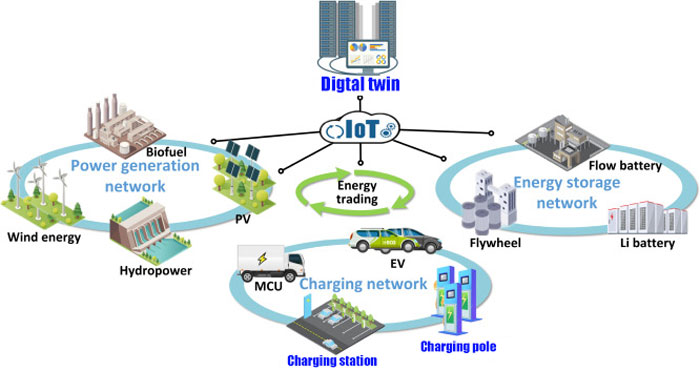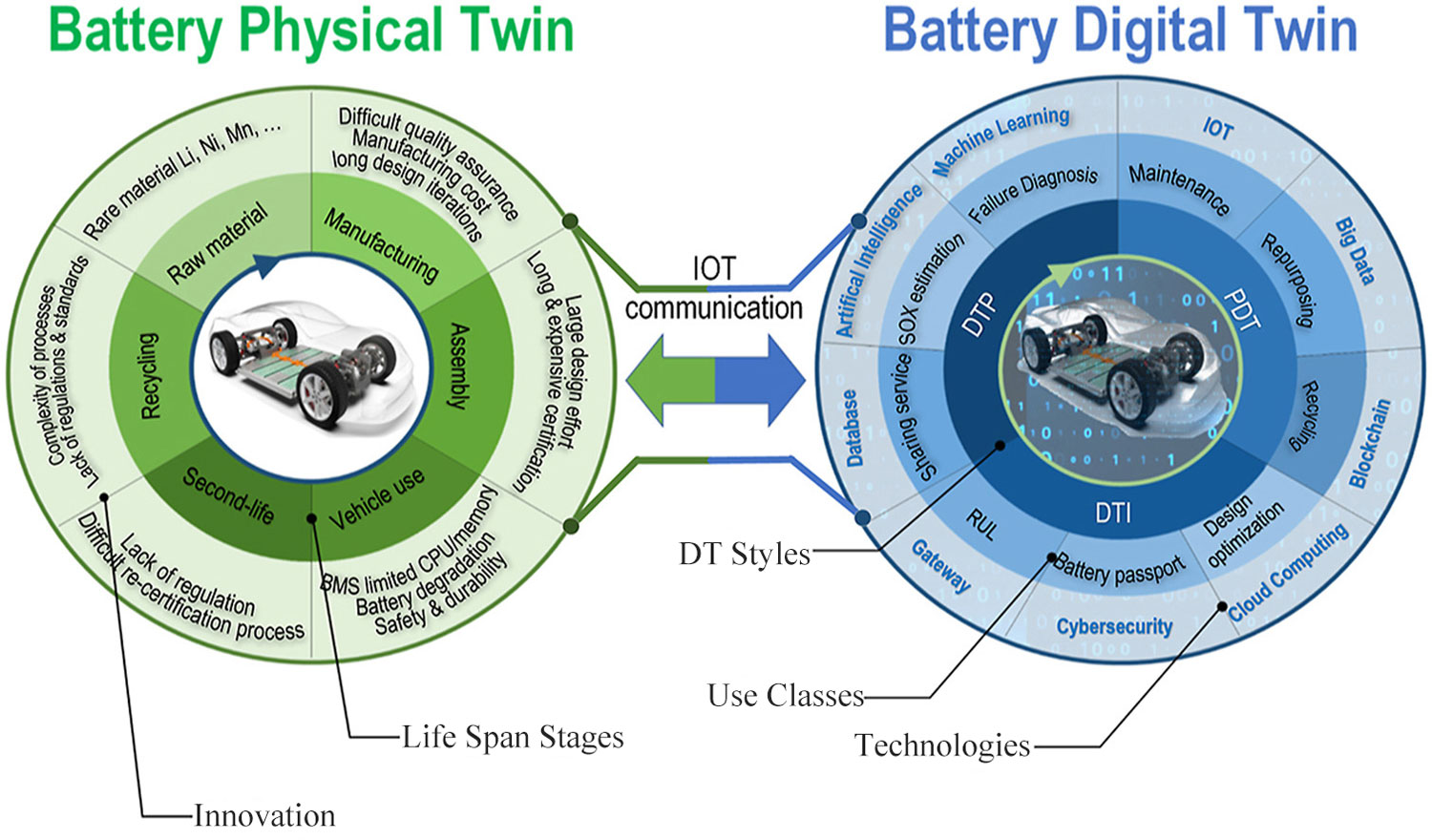
As global EV adoption surpasses 45% in 2025, charging network planning faces multifaceted challenges:
• Demand Prediction Errors: U.S. Department of Energy statistics show 30% of new charging stations suffer <50% utilization due to traffic misjudgment.
• Grid Capacity Strain: The European Grid Association warns that uncontrolled expansion could spike grid upgrade costs by 320% by 2030.
• Fragmented User Experience: A J.D. Power survey reveals 67% of users abandon long-distance EV travel due to charger malfunctions or queues.
Traditional planning tools struggle with these complexities, while digital twin technology emerges as a game-changer. ABI Research forecasts the global charging infrastructure digital twin market to reach $2.7 billion by 2025, with a 61% CAGR.
I. Demystifying Digital Twin Technology
Definition
Digital Twins are virtual replicas of physical assets built via IoT sensors, 3D modeling, and AI algorithms, enabling:
• Real-Time Data Syncing: Monitoring 200+ parameters (e.g., voltage, temperature) with ≤50ms latency.
• Dynamic Simulation: Simulating 12 scenarios, including load forecasting and failure prediction.
• Closed-Loop Optimization: Auto-generating site selection and equipment configuration recommendations.
Architecture
• Sensing Layer: 32 embedded sensors per charger (e.g., Hall current sensors with ±0.5% accuracy).
• Transmission Layer: 5G + edge computing nodes (<10ms latency).
• Modeling Layer: Multi-physics simulation engine (≥98% accuracy).
• Application Layer: AR/VR-enabled decision platforms.
II. Revolutionary Applications in Planning

1. Precision Demand Forecasting
Siemens’ Munich charging network twin integrates:
• Municipal traffic data (90% accuracy)
• Vehicle SOC heatmaps
• User behavior models Resulting in 78% station utilization (up from 41%) and 60% shorter planning cycles.
2. Grid-Coordinated Design
The UK National Grid’s digital twin platform achieves:
• Dynamic load simulation (100M+ variables)
• Topology optimization (18% lower line loss)
• Storage configuration guidance (3.2-year ROI).
3. Multi-Objective Optimization
ChargePoint’s AI engine balances:
• CAPEX
• NPV profitability
• Carbon footprint metrics Delivering 34% higher ROI in Los Angeles pilot projects.
III. Smart Operations & Maintenance
1. Predictive Maintenance
Tesla V4 Supercharger twins:
• Predict cable aging via LSTM algorithms (92% accuracy)
• Auto-dispatch repair orders (<8-minute response)
• Reduced downtime by 69% in 2024.
2. Energy Optimization
Enel X’s VPP solution:
• Links to 7 electricity markets
• Dynamically adjusts 1,000+ charger outputs
• Boosts annual station revenue by $12,000.
3. Emergency Preparedness
EDF’s typhoon response module:
• Simulates grid impacts under extreme weather
• Generates 32 contingency plans
• Improves disaster recovery efficiency by 55% in 2024.
IV. Enhancing User Experience
1. Smart Navigation
Volkswagen CARIAD’s twin platform:
• Displays real-time charger health status
• Predicts available connectors upon arrival
• Reduces user range anxiety by 41%.
2. Personalized Services
BP Pulse’s user profiling:
• Analyzes 200+ behavioral tags
• Recommends optimal charging windows
• Increases membership renewal by 28%.
3. AR Remote Assistance
ABB Ability™ Charger Care:
• Triggers AR guides via fault code scans
• Connects to expert systems
• Cuts onsite repair time by 73%.
V. Challenges & Solutions
Challenge 1: Data Quality
• Solution: Self-calibrating sensors (±0.2% error)
• Case: IONITY highway chargers achieve 99.7% data usability.
Challenge 2: Computing Costs
• Solution: Lightweight federated learning (64% lower compute demand)
• Case: NIO battery swap stations cut model training costs by 58%.
Challenge 3: Security Risks
• Solution: Homomorphic encryption + blockchain
• Case: EVgo eliminated data breaches since 2023.
Future Outlook: Digital Twin 2.0
Vehicle-Grid Integration: V2G bidirectional energy flow simulation.
Metaverse Convergence: Digital asset trading platforms for charging infrastructure.
Policy-Driven Adoption: EU to mandate digital twins in charger certification by 2027.
Boston Consulting Group predicts digital twins will enable charging networks by 2028 to:
• Reduce planning errors by 82%
• Cut O&M costs by 47%
• Boost user satisfaction by 63%
Post time: Feb-13-2025


